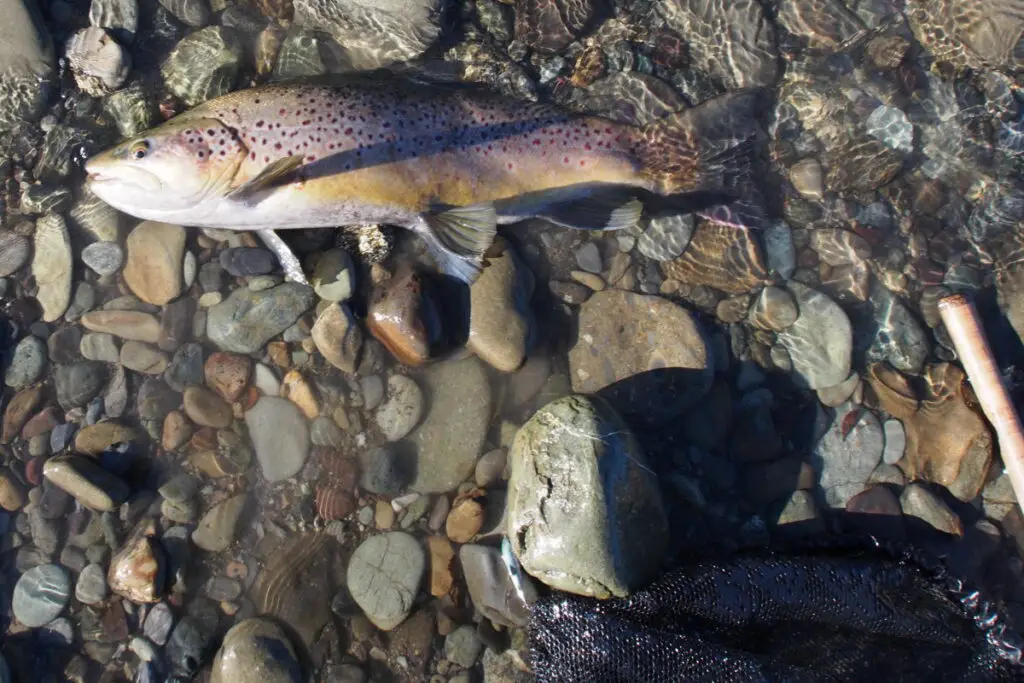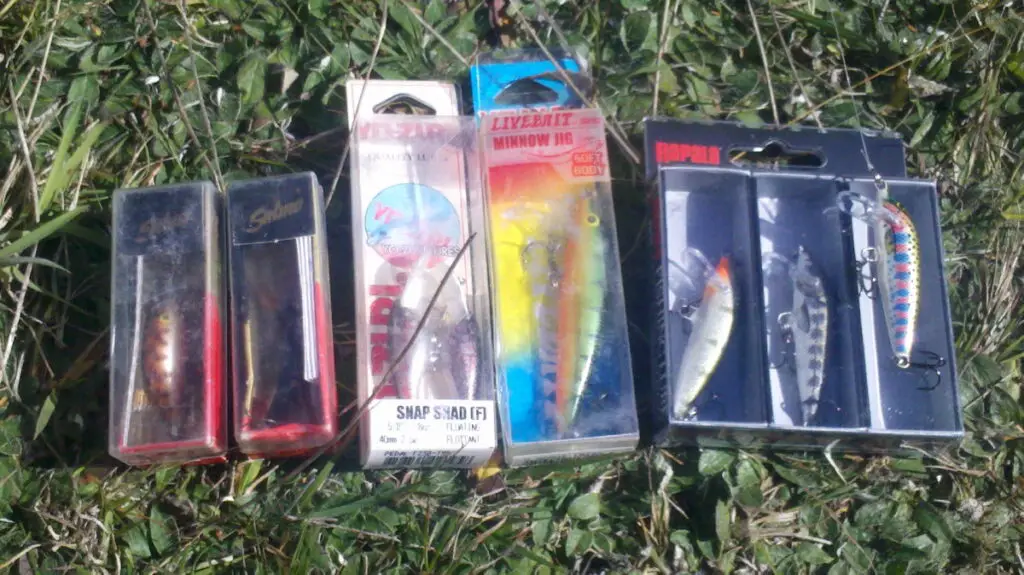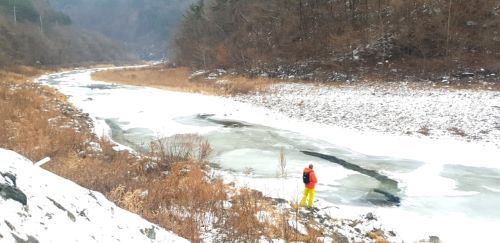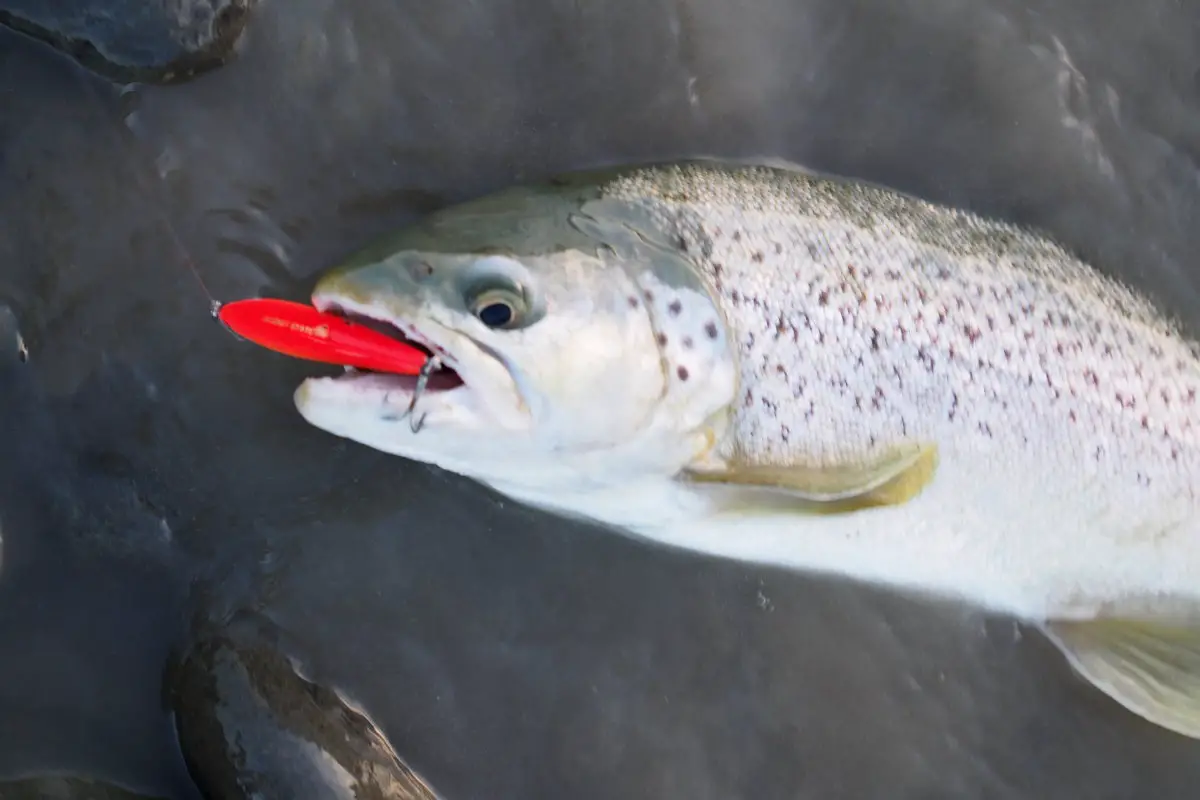Winter is one of my favorite times of year to target trout on jerkbaits. The reason why jerkbaits are my lure of choice over the colder months is that their realistic appearance allows for extremely slow retrieves, which give lethargic trout plenty of time to inspect before striking.
The basics are simple, cast the Jerkbait out and retrieve it slowly. The slower the better, because the trout are lethargic in the cold water. A slow retrieve gives the trout more time to decide to strike.
While it is true that their metabolism slows in cold water, they still need to feed. Trout still get hungry, and they still feed but they simply swim slower and will rather the food comes to them. They simply are less willing to expend a large amount of energy chasing down energetic prey.
Winter is a time for patience, slow, steady, and deep is usually the best approach.
Trout seem less willing to respond to rapid jerks and more energetic retrieve styles. Likewise, they stay deep in the water column where temperatures are warmer. Surface presentations rarely get a raise. In winter, being able to suspend a jerkbait and pause it mid-retrieve can be essential to get a trout to strike.
It is also important to realize, that trout are unlikely to be found in the same parts of the river as during the summer. They generally migrate to deep, slower water that is warmer.

Best colors and patterns?
Do not waste too much time trying to decide which color to fish. Fishermen care about such things more than the trout. When it comes to color selection, winter fishing is not really any different than fishing over the warmer months.

My personal favorite Jerkbaits for winter trout
I use many different sizes, styles, and colors of jerkbaits when targeting trout and I have written a very comprehensive guide on how I fish them and how many of the top models compare against each other.
The key to success is to experiment and constantly mix things up. On their day, any quality jerkbaits will catch trout but there are several lures I always have with me. These are my personal favorites which I fall back on when nothing else seems to be working.
For general fishing, I usually use a Floating Rapala or a Dynamic Lures HD trout. The Rapala is a floater, and the Dynamic HD trout is a sinker.

Water temperature and ice
Cold water temperatures are not usually an issue. If it is liquid, not ice, I go fishing.
Trout like cold water, but they have their limits. Generally, trout become harder to catch as the water temperature drops below 44f (6c). But even under the ice during the winter temperatures rarely drop below 40f (4c). At these temperatures, trout are sluggish but can be caught.
What causes the water temperature to drop, even more, is not colder temperatures but snow melt. Water from melting snow is much closer to 32f (0C) than water trapped beneath a layer of ice. So if there is a lot of thawing ice and snow, fishing can be very difficult. In fishing, there are always exceptions. The initial surge of water from the melt can actually cause a bit of a feeding frenzy.
It does get to a point, that a river or stream is simply too frozen. Not only does casting become difficult, I never feel safe walking across a frozen stream because it is hard to tell where the weak spots are.
If there is a lot of surface ice, I usually prefer to fish a spoon rather than a jerkbait simply because they sink faster, and I can bounce them along the bottom close to the overhanging ice.
What tackle do I use?
I honestly do not use anything special. Just an ultralight rod suitable for casting lightweight jerkbaits. I pair it with a standard trout reel, usually a 2000 size reel which I spool with either a 4lb or 6lb line. If you are interested in reels, I do have a guide here.
On the subject of line, I prefer to fish braid when using jerkbaits. I favor braid for several reasons, firstly it floats, which prevents the line from wrapping around underwater obstructions. Secondarily, the lack of stretch gives it excellent sensitivity, so I can feel every movement down the line. Finally, braid does not suffer from memory like monofilament does. These three factors combined make fishing with braid much easier.
My personal braid of choice is Berkley Fireline, but I know a lot of people prefer Daiwa J-braid. I rate fireline so highly that I have even written an entire article about it. When fishing braid, it is essential to use a leader, both monofilament and fluorocarbon leaders will be fine. I typically use 6lb leaders and its length is that of my rod plus a couple of extra feet.


Subscribe
We do not currently have a subscription or email list, but I have added it onto the list of features to implement and will sign you up once it is done.
Thanks
Thomas
I live in Colorado. Manitou Springs to be specific. I fish with both fly rod and spinning rod…more on a spinning rod than a fly rod…just because I find it more versatile.
I really appreciate what you’re doing with this site. I find it very informative. Well done!
I will say that finding particular articles is an experiment in brownian motion :). It would be nice if there were a listing of all of them. I suspect that’s in your menu…which doesn’t seem to be working. If there is a page where all the articles are listed, can you give me a link to it?
I am glad that you are finding the content useful. You live in a nice part of the country with plenty of good water to explore.
Thank you for the feedback regarding the menu is not working, it has been a constant source of headaches getting it to work. I will make it a priority to get it fix.
It is not pretty, but you can find the links to all the articles on this page.
https://www.troutresource.com/post-sitemap.xml